Pallet Inverter: How Can Cold Storage Facilities Perform Quick Pallet Swaps at -20°C?
Running a cold storage facility presents a unique set of problems. One of the toughest is dealing with pallets. A broken or non-compliant pallet can bring your entire operation to a halt. You have to swap the load. But at -20°C, this simple task becomes a major challenge. The cold makes manual labor slow and dangerous. Moving products to a warmer area for the swap risks breaking the cold chain, which can lead to spoiled goods and huge financial losses. You're stuck between risking your employees' safety and risking your product's quality. But there is a solution. A pallet inverter built specifically for these harsh, freezing conditions can perform this task quickly, safely, and right inside the freezer.
Cold storage facilities can perform quick pallet swaps at -20°C by using a specialized pallet inverter. These machines are engineered with components that withstand extreme cold, such as low-temperature hydraulic oil, fracture-resistant steel, and cold-rated electronics. This allows the inverter to securely clamp a full pallet, rotate it 180 degrees, and transfer the entire load to a new pallet in about a minute, all without leaving the frozen environment.
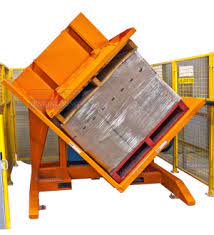
I’ve seen firsthand what happens when the wrong equipment is used in the wrong environment. A standard machine will fail in a freezer. It's not a matter of if, but when. The solution seems simple—buy a machine built for the cold. But the engineering that goes into making a machine reliable at -20°C is very specific. Let's break down why standard equipment fails and what makes a specialized pallet inverter the right tool for the job.
What makes standard pallet inverters fail in freezing environments?
You might think you can save some money by using a standard pallet inverter in your cold storage warehouse. I've seen many managers consider this. The problem is that the machine starts to fail almost immediately. The initial savings are quickly lost to downtime, repairs, and operational delays. Your new efficiency tool becomes your biggest headache. The extreme cold attacks every part of a standard machine. Hydraulic fluid turns to sludge, seals crack, and even the steel frame becomes a safety hazard. To choose the right machine, you first need to understand exactly what goes wrong with the wrong one.
Standard pallet inverters fail in freezing environments because their essential components are not designed for sub-zero temperatures. The hydraulic oil thickens, which puts immense strain on the motor and pump. Standard steel can become brittle and fracture under load. Rubber seals and hoses lose their flexibility, leading to cracks, leaks, and complete system failure. In short, a standard machine will quickly break down in the cold.
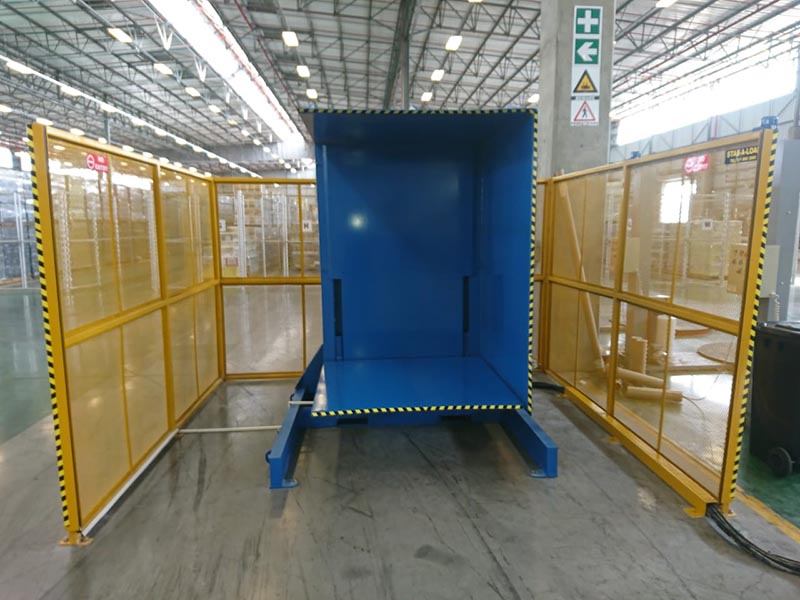
A Closer Look at Component Failure
When I started my career on the factory floor, I learned that a machine is only as strong as its weakest part. In a -20°C environment, a standard pallet inverter has many weak parts. Let's look at the three main failure points: the hydraulic system, the structural materials, and the electrical components. Understanding these details is critical for any manager, like Javier, who needs to make sound investment decisions.
Hydraulic System Paralysis
The hydraulic system is the muscle of the pallet inverter. In the cold, the standard hydraulic oil inside it changes. It goes from a fluid liquid to something thick like honey. This high viscosity means the hydraulic pump has to work much harder to move the fluid. This strain can lead to overheating and eventually burn out the electric motor. The machine's movements become slow and jerky, if it moves at all. It's like trying to run a marathon in a suit of armor. The machine simply can't perform.
Material Integrity Degradation
Most standard industrial equipment is made from common carbon steel. This material is strong and reliable at normal temperatures. But at -20°C, its properties change. The steel can go through something called a ductile-to-brittle transition. This means it loses its ability to flex and absorb impacts. It becomes brittle, like glass. A sudden shock or even the stress of a normal load can cause a catastrophic fracture. Imagine a clamp arm snapping while holding a 1,000 kg load. This is a massive safety risk that cannot be ignored.
Electrical and Component Failure
The cold attacks the smaller components, too. Condensation can form inside control boxes as the temperature fluctuates, leading to short circuits. Standard PVC-coated electrical wires become stiff and can crack if moved, exposing live wires. The same goes for rubber hoses and seals. They lose their elasticity, shrink, and crack, causing hydraulic fluid to leak out. This not only stops the machine but also creates a dangerous, slippery mess on the freezer floor.
| Component | Standard Material Failure at -20°C | Specialized Cold Storage Solution |
|---|---|---|
| Hydraulic Oil | Becomes thick, strains motor, causes slow operation | Low-temperature synthetic oil (e.g., ISO VG 15) that stays fluid |
| Steel Frame | Becomes brittle, high risk of fracture under load | Low-Temperature Carbon Steel (LTCS) that remains ductile |
| Hoses/Seals | Harden and crack, causing hydraulic leaks | Cold-resistant rubber or silicone compounds |
| Electrical Wiring | PVC insulation becomes brittle and cracks | Flexible, cold-rated insulation like Polyurethane (PUR) |
How do specialized pallet inverters overcome -20°C challenges?
You understand that a standard machine won't work. So, what's different about a machine designed for the cold? It's easy for a salesperson to just say a machine is "cold-rated." But as an engineer and business owner, I know that the details matter. If you don't know what to look for, you might buy a machine that isn't truly prepared for the environment, leading to the same failures you were trying to avoid. Let's look at the specific engineering that allows a pallet inverter to not just survive, but thrive at -20°C.
Specialized pallet inverters overcome -20°C challenges by using specifically chosen materials and components. They are built with low-viscosity, anti-freeze hydraulic fluids, steel alloys designed to stay strong in the cold, and electrical systems rated for arctic conditions. Key parts like the motor and control panel are often heated or sealed to prevent moisture damage and ensure they work every time.
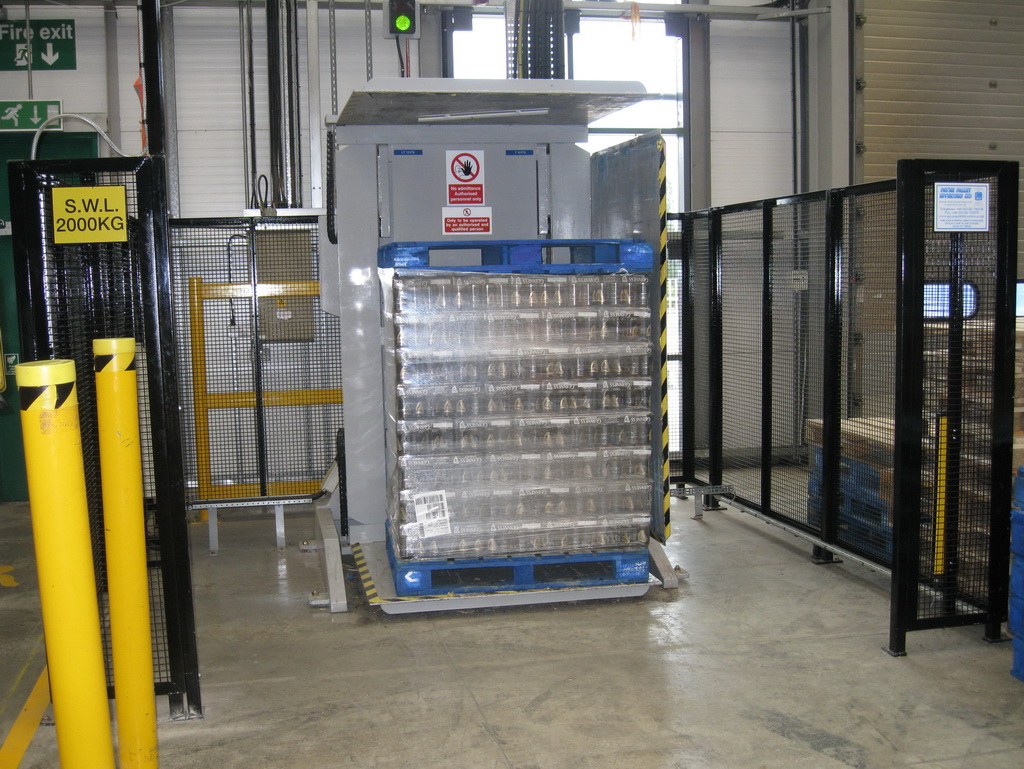
Engineering for the Extreme Cold
Building a machine for a freezer is a different kind of engineering. It requires a deep understanding of how materials behave at low temperatures. A few years ago, a client came to me after their "cold-rated" machine from another supplier failed. It turned out the supplier had only changed the hydraulic oil. They ignored the steel, the hoses, and the electronics. The machine failed in less than a year. This is why I believe in sharing knowledge. An informed customer makes better decisions. A true cold-storage pallet inverter is redesigned from the ground up.
The Heart of the Machine: The Hydraulic System
Everything starts with the hydraulic system. A specialized machine uses arctic-grade or synthetic hydraulic fluid with a very low viscosity rating (like ISO VG 15). This oil is designed to stay fluid and flow easily even at -20°C. But good oil isn't always enough. For the best performance, we often install small heaters in the oil tank. These heaters gently warm the oil before the machine starts, ensuring the system operates smoothly from the very first cycle of the day. We also use heated hydraulic lines to maintain the oil temperature as it flows through the machine. This prevents any part of the system from freezing up and guarantees consistent, reliable power.
Building a Robust Frame: Material Science in Action
The frame and clamping arms must be completely reliable. We use Low-Temperature Carbon Steel (LTCS), such as ASTM A333 grade steel. This type of steel is formulated to maintain its ductility and strength well below freezing. It costs more than standard steel, but it is a non-negotiable safety requirement. We don't just use it for the main frame. We use it for every critical, load-bearing component, including the pivot points, the clamping mechanism, and the base plate. This ensures the entire structure can withstand the stresses of daily operation without becoming brittle.
Electronics and Wiring That Endure the Cold
Finally, the electrical system needs to be protected. We use control panels with a NEMA 4X or IP65 rating. These are sealed enclosures that keep out all moisture and dust, preventing condensation from causing short circuits. The wiring itself is also special. Instead of standard PVC, we use cables with a Polyurethane (PUR) jacket. PUR stays flexible in the cold, so the wires won't crack or break when the machine moves. All sensors, limit switches, and motors are also rated for low-temperature operation. This attention to every detail is what creates a truly reliable machine.
What are the key safety features for operating a pallet inverter in cold storage?
Efficiency is important, but nothing is more important than the safety of your people. A cold storage facility is already a challenging work environment. Floors can be slippery. Visibility can be limited. The cold itself is a hazard. When you introduce a powerful machine like a pallet inverter, you must make safety the top priority. An accident in a -20°C freezer is a serious event. Emergency response is more difficult, and the risk of severe injury is higher. So, let's discuss the essential safety features that protect your team and your products.
Key safety features for a cold storage pallet inverter include full-perimeter safety fencing with interlocking gates that stop the machine if opened. Light curtains are also used to create an invisible safety barrier. Operator platforms should have anti-slip surfaces. And emergency stop buttons must be large and easy to press with gloved hands. Inside the machine, hydraulic pressure relief valves are critical to prevent overloads caused by the cold, thick fluid.
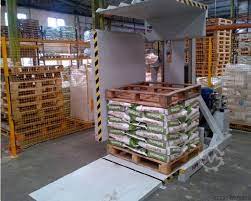
Designing Safety into the System
Safety should never be an afterthought. It has to be designed into the machine from the very beginning. When I work with clients like Javier, who are responsible for the well-being of hundreds of employees, we spend a lot of time on the safety plan. It's not just about meeting minimum standards; it's about creating the safest possible work environment.
Active Safety Systems: Preventing Access During Operation
The first line of defense is preventing people from getting near the machine while it's moving. We achieve this with a combination of physical and electronic systems.
- Safety Fencing: We install tall, robust fencing around the entire operational area. This creates a clear physical barrier.
- Interlocking Gates: The access gate in the fence is fitted with an interlock switch. If the gate is opened, the switch sends a signal that immediately stops the machine's cycle. The machine cannot be restarted until the gate is securely closed.
- Light Curtains: For a higher level of protection, we use light curtains. These are sensors that project a grid of infrared beams across the machine's access points. If a person or object breaks any of these beams, the machine stops instantly. This is much more effective than a simple fence, as it protects against someone reaching into the danger zone.
Passive and Mechanical Safety: The Fail-Safes
These are the features that protect people and property if something goes wrong with the machine itself.
- Hydraulic Check Valves: These are one-way valves installed in the hydraulic lines for the clamps. If the machine loses power or hydraulic pressure, these valves automatically lock the clamps in place. This prevents the load from being dropped, which could be catastrophic.
- Pressure Relief Valves: These valves are like a safety valve on a boiler. If the pressure in the hydraulic system gets too high—which can happen when cold oil is forced through the system—this valve opens to release the excess pressure, protecting the pump, motor, and hoses from damage.
Operator-Centric Safety Design
The machine must also be safe and easy for the operator to use.
- Large E-Stops: Emergency stop buttons are large, red, and mushroom-shaped. They are designed to be easily and quickly pressed by an operator wearing thick winter gloves.
- Anti-Slip Surfaces: Any platform or area where the operator needs to stand is covered with a heavy-duty, anti-slip surface. This is critical in an environment where floors can become icy.
- Clear Alarms: The machine is equipped with bright flashing lights and a loud audible alarm that activates during operation, ensuring everyone in the area is aware that the machine is in motion.
| Safety Feature | Function | Why It's Critical at -20°C |
|---|---|---|
| Perimeter Fencing & Interlocks | Prevents human entry during the machine cycle. | Reduces the risk of crushing injuries in a confined space. |
| Light Curtains/Scanners | Creates an invisible safety barrier that stops the machine. | Offers a higher level of protection; stops the machine instantly. |
| Hydraulic Check Valves | Prevents the load from falling if power is lost. | A critical fail-safe to protect personnel and product. |
| Oversized E-Stops | Allows for a quick emergency shutdown. | Operators wearing thick gloves can activate them without delay. |
| Anti-Slip Surfaces | Provides secure footing for the operator. | Floors in cold storage can be icy, increasing the risk of falls. |
How does a pallet inverter impact operational efficiency and ROI in a cold chain?
As a business owner, you need to justify every major investment. I understand this perfectly. A specialized pallet inverter has a significant upfront cost. It's easy to focus on that number. But to make a smart decision, you have to look at the whole picture. You need to analyze the return on investment (ROI). It's often the hidden costs of your current process—like wasted labor, product damage, and safety risks—that make the investment worthwhile. Let's break down the numbers to see how a pallet inverter pays for itself.
A pallet inverter directly improves operational efficiency and ROI by automating pallet swaps in 60 to 90 seconds. This drastically reduces labor costs and the risks of manual handling. It increases throughput, minimizes product temperature changes by keeping goods inside the freezer, and reduces product damage. This all leads to a clear return on investment through major cost savings and higher productivity.
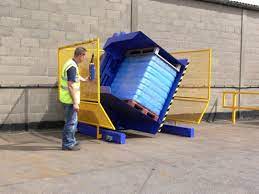
Quantifying the Return on Investment (ROI)
When I established my own factory, I had to become an expert at financial analysis. Every machine had to prove its worth. A pallet inverter in a cold storage facility has one of the clearest ROIs I've ever seen. The improvements are dramatic and easy to measure. Let's compare the manual process to the automated one.
Quantifying Labor and Time Savings
First, consider the labor. Manually swapping a pallet is hard work. It typically takes two or three workers. They have to destack the product, move it to a new pallet, and then restack it. In the cold, this process is slow and can take 10 to 15 minutes per pallet.
Now, consider the pallet inverter. The process is handled by one operator. They place the pallet in the machine, press a button, and the entire load is transferred to a new pallet in about 90 seconds.
Let's do some simple math. If you swap 40 pallets per day:
- Manual: 3 workers x 12 minutes/pallet x 40 pallets = 1,440 minutes = 24 man-hours per day.
- Automated: 1 worker x 2 minutes/pallet x 40 pallets = 80 minutes = 1.33 man-hours per day.
The labor savings are massive. You can reassign those workers to more valuable tasks.
Protecting the Cold Chain and Product Quality
This is a huge cost that many companies don't track well enough. When you manually swap a pallet, you often have to move the product to a warmer staging area. Every minute the product is out of the -20°C environment, its temperature rises. This can affect the quality, safety, and shelf life of frozen foods. A small percentage of product loss on every swapped pallet adds up to a significant financial loss over a year. A pallet inverter performs the entire swap inside the freezer. The product is out of its original position for less than two minutes. The cold chain is maintained, and product quality is protected.
A Simple ROI Analysis
To convince a practical business leader like Javier, the numbers need to be clear. Here is a simple framework for calculating the ROI.
| Cost/Savings Category | Manual Swapping (Annual Cost) | Pallet Inverter (Annual Cost/Saving) | Net Impact |
|---|---|---|---|
| Labor Costs | High (e.g., 24 man-hours/day) | Very Low (e.g., 1.33 man-hours/day) | + Major Savings |
| Product Spoilage | Significant (e.g., 1-2% of goods) | Negligible (e.g., <0.1% of goods) | + Major Savings |
| Workplace Injury | High Risk (potential insurance claims) | Low Risk (reduced premiums) | + Savings |
| Equipment Capital Cost | $0 | -$X (One-time cost) | - Initial Cost |
| Maintenance & Energy | Minimal | -$Y (Annual cost) | - Ongoing Cost |
| Total Annual Impact | (Total Savings - Ongoing Costs) |
The payback period for a specialized pallet inverter is often less than two years. After that, the machine generates pure profit for your operation through cost savings.
From My Perspective: Why a "One-Size-Fits-All" Pallet Inverter is a Myth in Cold Storage
I’ve spent my entire career in the packing machine industry. I started as an engineer on the factory floor and eventually built my own company. I’ve seen what works and what doesn't. And I can tell you with certainty that when it comes to extreme environments like a -20°C freezer, "good enough" is never good enough. The idea that a single, standard machine can solve every problem is a dangerous myth.
A "one-size-fits-all" pallet inverter is a myth in cold storage because every facility is different. Critical factors like the type of product being handled, the available floor space, the ceiling height, and the required daily throughput all demand a tailored solution, not a generic machine.
It's About More Than Just the Temperature
The -20°C temperature is the most obvious challenge, but it's just the starting point. A true solution partner will ask you more questions.
- What is your product? A pallet of solid, frozen blocks of fish needs to be handled differently than a pallet of fragile boxes or plastic tubs of ice cream. The clamping pressure of the inverter must be precise and adjustable. Too much pressure will crush your product. Too little pressure and the load could shift or fall. A machine designed for rigid steel coils will destroy a pallet of frozen pastries. The clamping system has to be matched to the product.
Your Facility Dictates the Design
Your building's layout is another critical factor.
- Do you have enough space? A standard 180-degree inverter needs a lot of room. A forklift has to load the pallet, the machine inverts it, and then the forklift has to come back to remove it. If your freezer aisles are narrow, this design might not work.
- What is your workflow? Maybe a floor-level loading model is better. The operator can place the pallet using a simple hand pallet truck, which is much more maneuverable. Or maybe a "pallet changer" is the right solution. These are machines that push the load from one pallet to another without a full 180-degree inversion, which can be faster and require less space.
- How tall is your ceiling? I once worked with a client whose freezer had very low ceilings. A standard inverter was simply too tall. We had to create a custom, low-profile design to fit their facility. A "one-size-fits-all" supplier would have just told them it was impossible.
The Importance of a True Partnership
This is why my mission with SHJLPACK is to be more than a supplier. I want to be a partner. We don't start by showing you a catalog. We start by listening. We want to understand your operation, your products, and your challenges. My journey from employee to factory owner was possible because people shared their knowledge with me. Now, I want to give back. I want to use my experience to help you find the right solution, not just sell you a machine. A custom-fit solution ensures safety, maximizes efficiency, and provides the best possible return on your investment.
Conclusion
A specialized pallet inverter is not just another piece of equipment. It is a strategic investment in the safety, efficiency, and quality of any modern cold storage facility operating at -20°C.


